Dear Barbara,
My flight to Glasgow is full of businessmen. Fancy suits, conservative ties, and shoes shining like the sun. It’s two days after “Super Saturday,” the day that the British Parliament tried to decide about Brexit. I wanted to catch the feeling of being in Great Britain a few days before they leave the EU, and here I am, on board a plane towards Glasgow, less than ten days before Brexit.
It’s a rather spontaneous decision -and such decisions come at a cost: the economy ticket cost as much as the business class. Hence, I booked a business-class seat with Lufthansa. From the moment I boarded the plane, I felt that I didn’t pay for a plane ticket; it seemed like I had bought a ticket to a theater.
The political turmoil in the UK seems to attract people holding key roles in modern society. My fellow business class travelers are bankers, diplomats, and politicians. I wear my sneakers and a red pullover, and I am somehow incompatible with the setting. The chatter in the cabin is not that vibrant. I hear French, English, and German. It’s more of confidential whispers and less of proper talks. I try to pick bits and pieces of these talks, and sometimes, I think of interfering. But I remain silent. I prefer to receive the messages and not to transmit any.
Clouds and turbulences. Glasgow appears beneath a thick veil: the suburbs host tall buildings, and for a moment, one can see the sea. As the plane approaches the runway, I realize that I haven’t been in Great Britain for almost fifteen years.
How dark Glasgow is
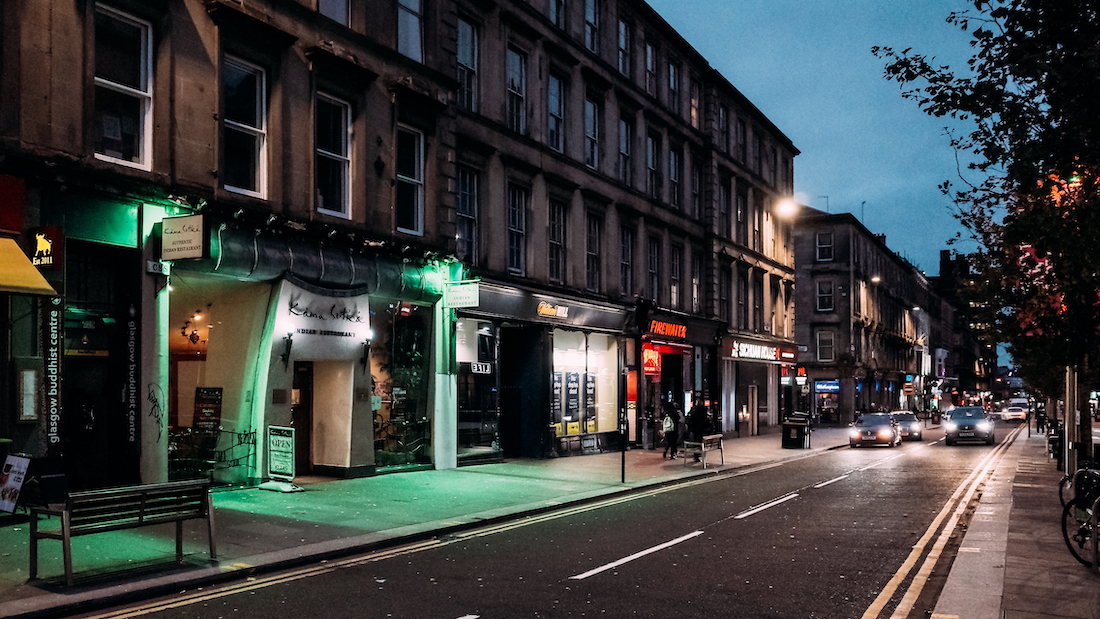
I always thought that Berlin was among the darkest cities I’ve ever seen. But today, having my initial walk in Glasgow, I feel that the Scottish city outperforms the German capital. The weather is bleak: it’s 6 degrees, the clouds are grey, and the Victorian architecture makes the atmosphere even darker. Add on top the rundown facades, and you have the picture: a truly interesting city for me.
I always think that industrial cities have a thing for politics and music. While music is everywhere in Glasgow -you can tell from the moment you step into the city- I thought that the talks would be all about Brexit. To my surprise, though, nobody talks that much about it. It’s my first day here, and I have two coffee breaks in the late afternoon; I visit a pub for a beer and another pub for haggis neeps and tatties; at night, I buy sparkling water from a mini-market where a bunch of people talk and laugh.
But I fail to hear anything about Brexit. Were the Glaswegians fed up with the process, or they simply came to terms with it?
Of course, whenever I ask somebody’s opinion about Brexit, he or she has something to tell. My opening lines don’t matter: the locals always reply using a political tone. I don’t detect a sentimental touch in their voices, though. It is as if the sentiments have been insulated under layers of greyness.
The floating heads of Glasgow
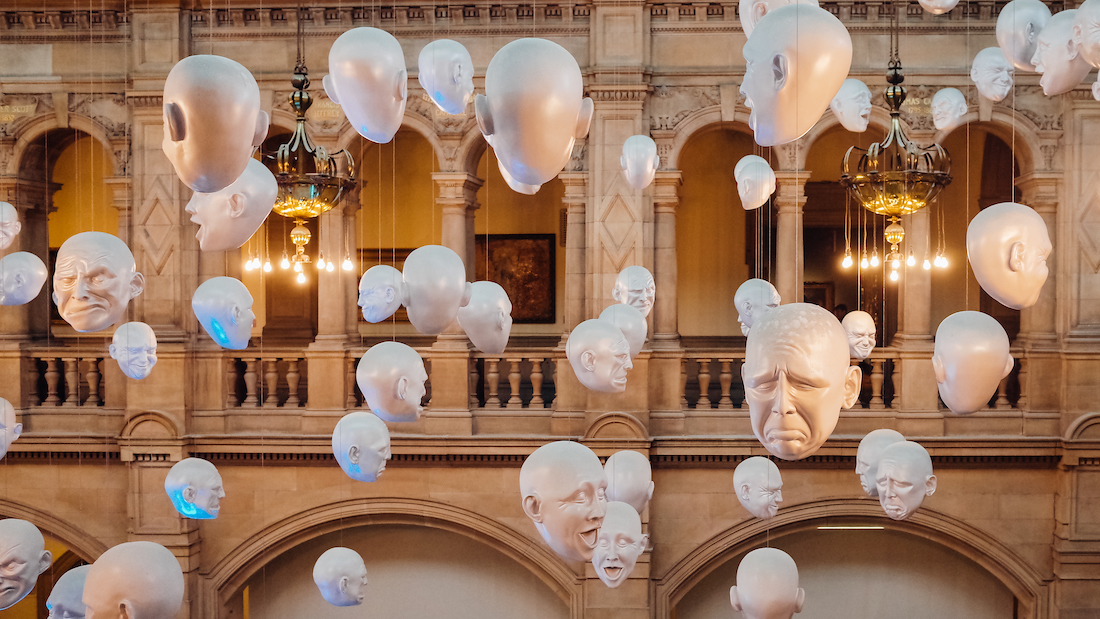
Glasgow keeps giving me the impression of a much smaller city. Despite having more than 600,000 inhabitants, it feels compact. Maybe it’s the fact that there are no tall buildings in downtown Glasgow -the city saved them for the suburbs- and the streets are wide. I remember the traffic chaos in Catania and how it seemed bigger to me -just 400,000 people live in Catania.
It’s a twenty minutes walk to West End, and I walk past the highway before I start strolling around the hood. Glasgow has some of the most beautiful cafes I’ve seen in Europe, and the ones in the West End look splendid. It’s cold, and all I see are dark interiors and heads floating inside them above steamy cups. But I keep on walking until I find myself in front of the Kelvingrove Museum.
This impressive museum -built in Spanish Baroque style over a century ago- hosts a big collection that is split into two sections: the East wing is Life while the West one is Expression. As you enter, you see a beautiful pipe organ, and there are short concerts daily. But what I’m here to see is mainly the Floating Heads and Salvador Dali’s Christ of Saint John on the Cross.
The “Floating Heads” is an installation by Sophie Cave. Fifty white heads are hanging from the roof, and they display emotions ranging from happiness to despair. The Floating Heads became very popular in the last couple of years, and for some odd reason, when I see them this day at Kelvingrove, I can’t help but think of a local urban legend. According to that Glaswegian myth, the building was accidentally built back-to-front. This -continues the myth- was, of course, unacceptable, and the architect didn’t have much of a choice: he jumped from one of the towers after realizing what he did…
As for Dali’s painting, well, it’s even more stunning than it looks in the pictures. I always thought that it was rather small in size, but the truth is that it’s big and impressive. Soon, I realize that it has the status of a local Mona Lisa because there are loads of people in front of it -a bunch of floating heads shooting photos like there is no tomorrow. I try to be patient, but patience is not a standalone virtue for me: soon, I lose interest and proceed to the Dutch Renaissance.
The Polaroid Diaries: Linda McCartney
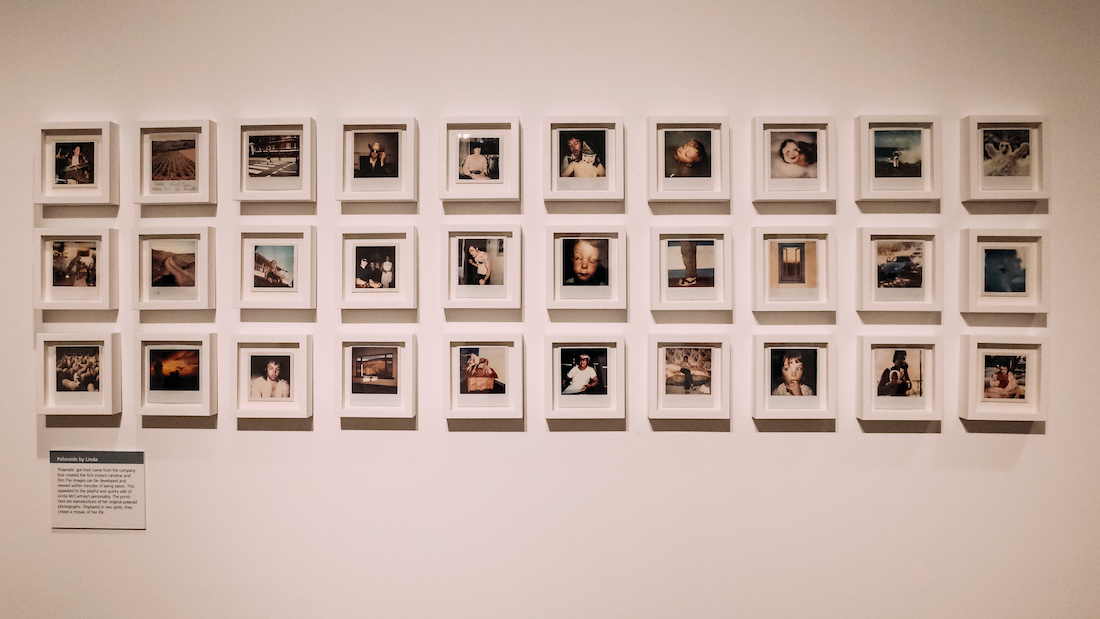
As you know, this summer I had an idea: to shoot polaroids during my journeys. That’s how actually the Polaroid Diaries series was born. When I was searching for a name for the photos, I thought the term Diaries was compatible both with the Letters and the Travel Journal section of the blog. I got the camera, created the sections, and started shooting polaroids.
Then, one day in late September, Google News showed me an article about Linda McCartney and her Polaroid Diaries. It was too late for me to change the name of the section, but I somehow enjoyed it: it was for sure a funny coincidence. Well, the coincidence becomes even bigger because at Kelvingrove Museum, there is an exhibition about Linda McCartney and some of her Polaroid Diaries are on show. Some of her polaroids are really impressive.
Winds of Glasgow before the Brexit
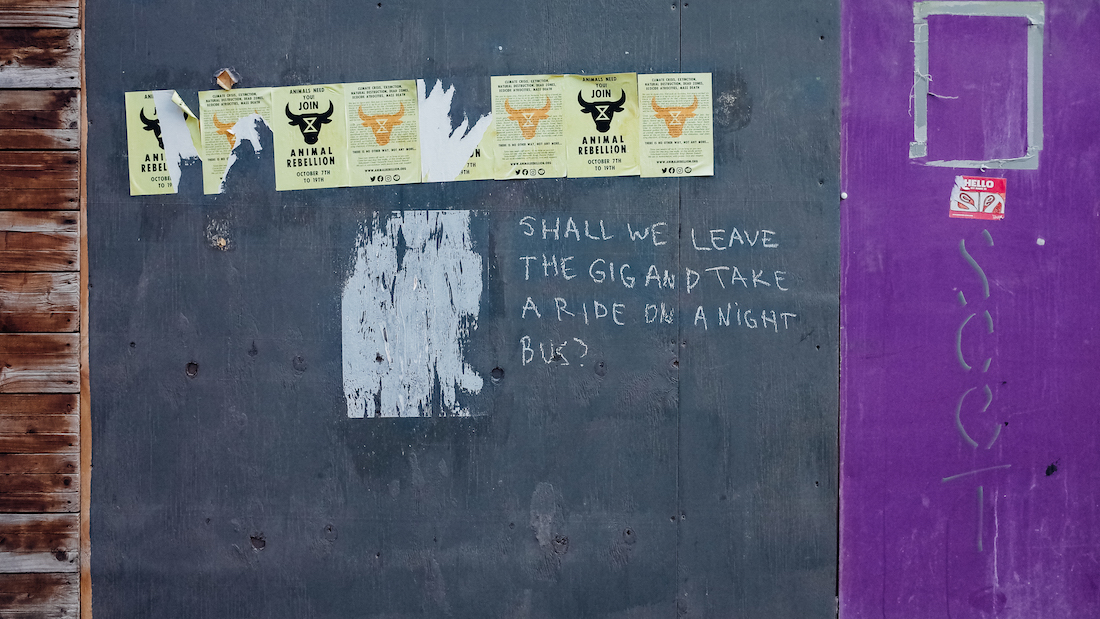
One windy night I entered a pub in Glasgow -the owner asked me not to mention its name because this might disappoint some regulars. My hair probably looks messy because when I enter the pub, he’s drinking beer with some friends, and instead of saying “Hi,” all he says is: “Well, I see the wind coming in.”
It’s the start of a funny talk, and I end up drinking with them. The owner supports the Brexit -“and you know, in a city like Glasgow, it ain’t that easy.” It’s true: Glasgow voted for Remain with an almost 70% result. In the area where the pub is located, it reached nearly 80%. These numbers are impressive, but the pub’s owner isn’t that convinced. “I’m happy that we are leaving the EU’, he says. “It doesn’t deserve the trouble.”
None of his friends shares this opinion, though. They all voted for Remain, and while they argue lightly, soon, the talk becomes more easy-going. But I’m not ready to let the Brexit talk die out: I might not have that many chances to talk about it. Therefore, I start talking about the outcasts of globalization, why the rural areas voted for Brexit while the cities were (usually) pro-Remain, and how this could have an impact on everybody’s life. The conversation starts to become vivid again.
Then, one more guy with messy hair enters the pub. He is a good friend of the owner. “That clown,” he says, and he refers to Boris Johnson. “The bill passed,” he then adds, “I guess it’s a matter of time now.” It’s the night that the lawmakers rejected the timetable. There are no other remarks -and that’s how the Brexit talk dies out.
To the lighthouse
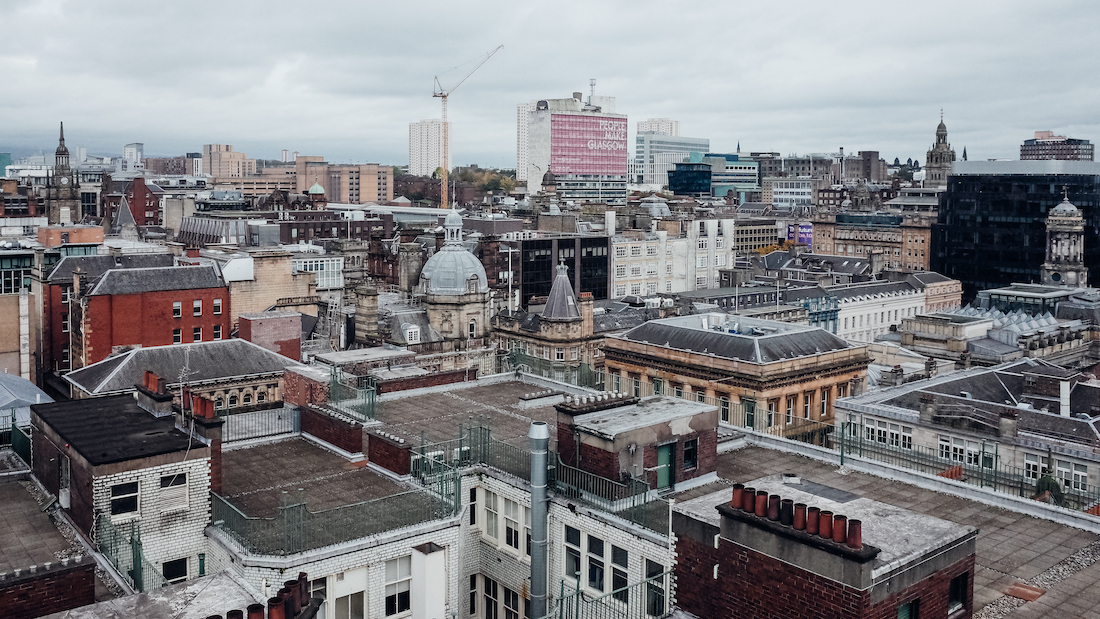
Dark cities always have an impact on me. While I walk through the streets of Glasgow, I keep remembering older stories, urban myths, and novels: it’s as if the city encourages introspection and remembrance.
On one of the last days in Glasgow, I decided to walk as much as possible. My long walk starts at my hotel at 9 am and finishes around 6 pm. My only interval is a quick cup of coffee and hot wrap at the Glasvegan -all the other time, I’m just walking. I start, from West End, I go down to Finnieston, I cross the River Clyde all the way to Pollokshields -and then I walk past the Mosque before I reach St Enoch. You can’t put a city in your pocket if you don’t walk around it until you are exhausted.
In the end, I arrive at the Lighthouse, and I can only think, of course, of Virginia’s Woolf novel (To the Lighthouse). But this has nothing to do with Virginia Woolf; the Lighthouse is a building by Charles Rennie Mackintosh. The prolific architect is one of the city’s most celebrated sons, and he is literally everywhere. There are several buildings by Mackintosh all around the city, but the Lighthouse is probably the most iconic one.
While nowadays it hosts the Center for Design and Architecture, in former times, it hosted the headquarters of the Glasgow Herald, the world’s oldest national newspaper. What makes the Lighthouse even more stunning is the fact that after climbing a spiral staircase, you end up on the roof, where you can enjoy a panoramic view of Glasgow.
I stand for half an hour at the top of the Lighthouse and observe the city. I don’t know why, but I think equally of Virginia Woolf and Charles Rennie Mackintosh. I’m not aware if they ever met, probably not. But I try to find a way to connect them. The closest connection I can think of is that To the Lighthouse was published in 1927, a few months before Mackintosh passed.
Glasgow’s subway: the Clockwork Orange
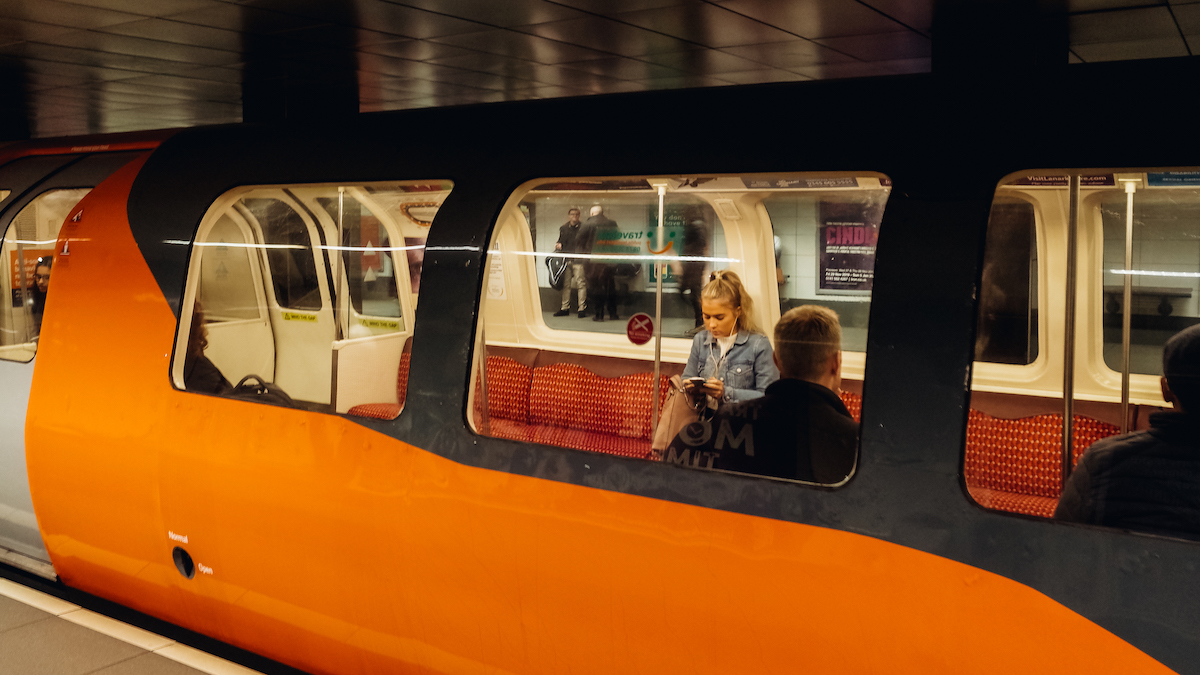
As if this is a pattern that I always have to follow, for every long walking day, I give myself a lazy one. The lazy days of a journey always translate to using public transport. Early in the morning, I buy a daily ticket for the subway. Unfortunately, Glasgow has no trams -the last one rolled around the city in the ’60s. Nonetheless, the metro in Glasgow is rewarding. It consists of one line, its color is orange, and it circulates a good part of the city. I hop on and off the stops and get glimpses of different hoods.
As I wrote earlier, dark cities are full of myths, and Glasgow seems to be the epitome. It takes 24 minutes to travel the whole line, and some of the locals refer to it as the Clockwork Orange. Apparently, the nickname derives from Kubrick’s homonymous movie (A Clockwork Orange), but the origin is uncertain. A man in his sixties told me that it probably has something to do with the orange color that it’s presented on the maps, and he mentioned something about the network’s refurbishment in the ’70s.
A cone in the head

My last day in Glasgow is rainy beyond words. I walk down to George Square, and I wander a bit around. I’m desperate for a cup of coffee and want to sit outside. Winter is coming -but I’m not ready for it at all. I want to have the impression that summer still holds on. Alas…
After giving up all my hopes for outdoor sitting, I walk down Queen Street. I end up at the Gallery of Modern Art, and in front of it, I see the statue of the Duke of Wellington. But there’s something odd about it: the Duke wears a plastic traffic cone on his head. Soon, I found out that this habit started in the ’80s, probably from a (drunk?) student. Now and then, the authorities remove the cone -but soon, someone replaces it. It’s a constant game between the locals and the authorities, between stuffiness and play.
Fish & Brexit
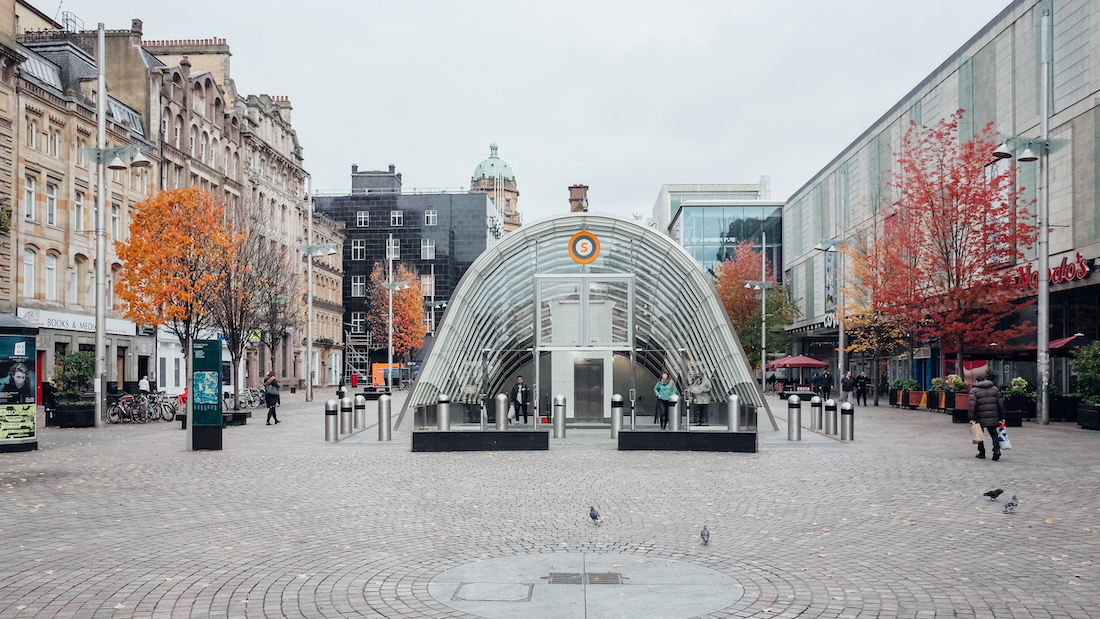
On my last evening in Glasgow, I think of eating fish and chips. I spent the whole day in Edinburgh, and I feel somehow tired. Since I’m not in the mood for searching all over the city for the finest pub, I just enter the first one I come across. I check the menu, and I go to order.
“I’d like to have a portion of fish and chips, please.”
“Um,” says the guy. “We don’t have.”
“Err, how come?”
“To be honest, I have no clue either. We just ran out of it.”
I never thought I’d enter a pub and there would be no fish and chips. For the second time on this journey, I’m ordering haggis, neeps, and tatties, and I drink a local beer. I’m probably way too tired because I get dizzy very quickly. On the way back to the hotel, I walk slowly; no surprise, it rains again. I look left, I look right, and I see everywhere narrow dark alleys. The lanes of Glasgow are short side streets that either connect two roads or end up in a building. They are not well-lit, and I often see garbage piled on one side.
Half-drunk and still exhausted, I walk down a couple of lanes. I don’t want to go back to the hotel room. All I want is to walk all night long and smell the street. Those dark alleys of Glasgow have a very distinct smell. No, even though they are deserted, it’s not the smell of life after humans. On the contrary, it’s exactly how a proper city smells: leftovers of food, humidity, lost dreams, and hope for better days.
Farewell to Glasgow
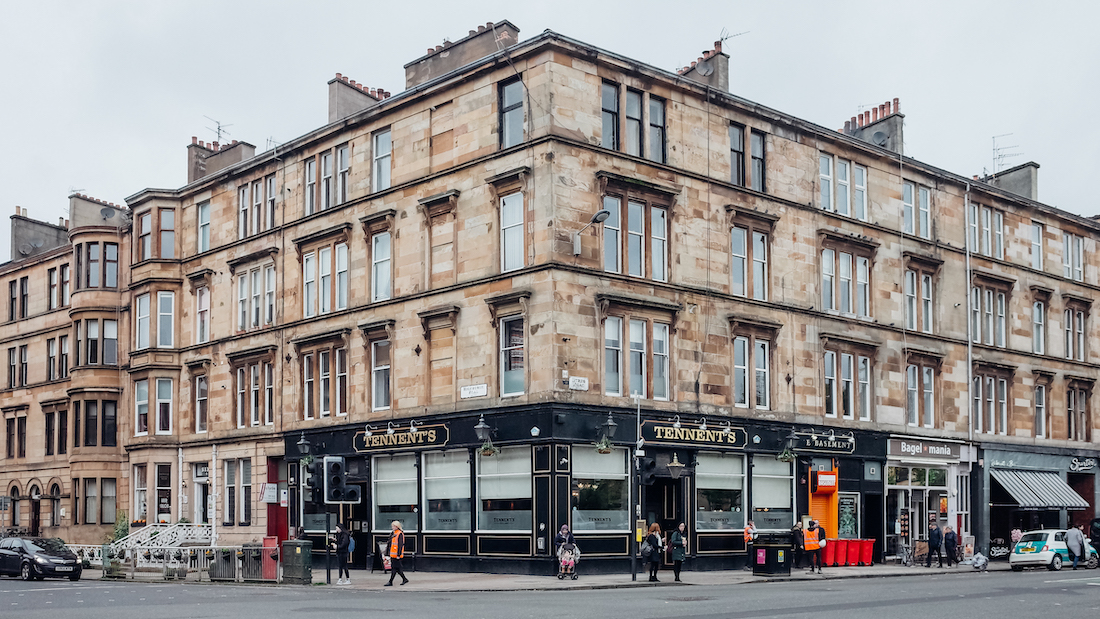
Glasgow, this admittedly dark city, seems, oddly, joyful to me. My initial thought was to come here to see how the city reacts to the imminent Brexit. Soon though, my interest in the city expanded, and the Brexit case was absorbed. A lighthouse, a cone in the head, a Clockwork Orange -and all these, among constantly floating heads. Glasgow has a rare quality: it decompresses through playfulness. It soaked up Kubrick’s movie, it came to terms with a Duke, and it kept a lighthouse ashore. I’m pretty sure that it will assimilate Brexit as well.
Love always,
George
More about Glasgow: The best day trips from Glasgow, The Glaswegians, What to do in Glasgow
*Get my FREE Travel Writing Course*
Pin it for later
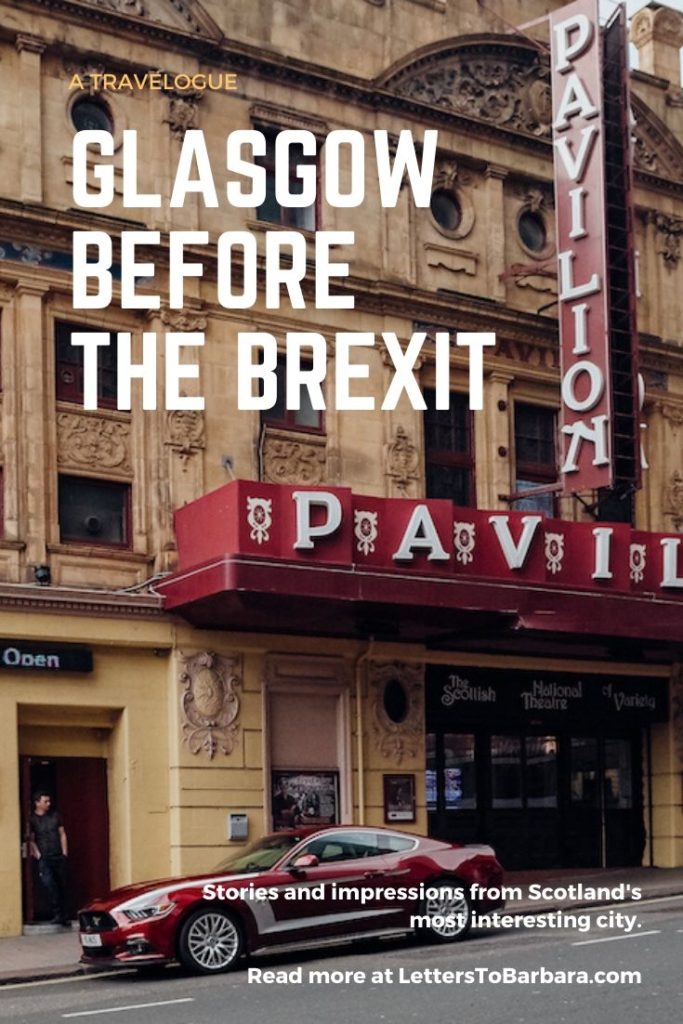
Please share, tweet, and pin if you enjoyed reading Glasgow before Brexit. Your support keeps this website running and all the info up-to-date. 🙂
Last Updated on October 8, 2022 by George Pavlopoulos


Hi , i have started to read your blog, i just wanted to congratulate you, i like it very much, such a unique style very captivating …i love to travel and i wish i could express my feelings and impressions from a travelling destination like this! Elisa
Hello Elisa. Thank you very much for your kind comment. I really appreciate it. I hope that you’ll find even more interesting reads on the blog 🙂 Thanks for stopping by.
Best regards,
George